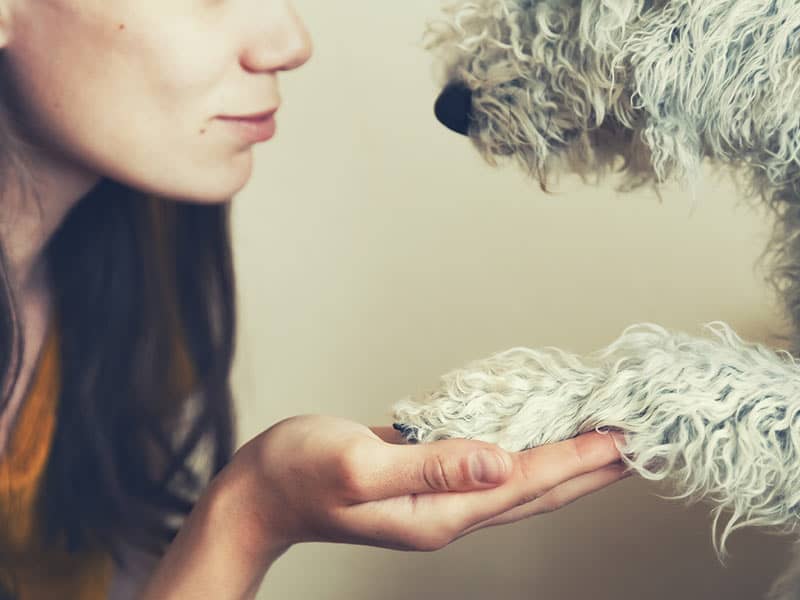Butch, a retired chestnut gelding, standing about 14 hands high, was one of the horses at SMaRT, the Snow Mountain Ranch Therapeutic Riding Program at the YMCA of the Rockies in Fraser, Colorado, where I took Katie for therapeutic riding.
By the time midsummer 1997 came around, Butch and my daughter, Katie, had developed an unspoken understanding, a trust between rider and provider.
Once Butch was safely between the mounting platform and another elevated wooden base, he stood still and patiently re-mained with his colleagues. Rose took my daughter up the ramp and guided Katie’s hands to the saddle horn. She lifted Katie’s right leg over the saddle. A second volunteer, standing on the platform across from Rose, put Katie’s foot into a stirrup. When Katie was centered, Rose said, “Katie, tell Butch to walk on.”
Katie smiled, unresponsive to Rose’s request. Aside from various pitches of sound indicating her excitement or discomfort, Katie’s only other form of expressing herself was through an adapted sign language. This was limited to “eat,” “drink,” and occasionally “more,” along with a turn away of her head for “no.” We all waited for any kind of response.
Finally a volunteer on each side of the horse lifted Katie’s feet to help her tap Butch’s flanks. Rose spoke for Katie and cheerfully said, “Walk on,” and they all headed toward the corral.
Katie’s usually curved, slumped posture straightened. She lifted her head and beamed a smile of pride to the audience — me. I swallowed her joy in a lump and claimed it for my own. Katie has had little to say in her own life, and she attempts whatever is asked of her. In spite of significant challenges, she is completely trusting and seems at peace with her circumstances. In that moment I filled with admiration at the way she sat upon Butch. My daughter, my Katie, my Dale Evans.
Engaged in fun and motivated by Butch, Katie didn’t recognize that she had been positioned on him to achieve therapeutic goals. They were goals that would help her to walk with more stability, sit and stand with a stronger spine, and engage in developing communication. The fact that the assisted motion of mounting him was the same for getting into the bathtub at home — a specific life skill — was an added bonus. Therapy was boring. Butch was inspiring.
After he walked in the corral, Butch matched his gait to the stride of the volunteer holding his lead rope. The other two volunteers, who were walking on either side for the rider’s safety, helped Katie pull back slightly on the reins to stop Butch. They added a “whoa” for her. They handed Katie a plastic ring and guided her hands to drop the ring over a fence post. Next, they wove their path around barrels, stepped over a row of logs, and even turned Katie around to ride Butch backward. Butch was in sync through it all, even to the point of helping to right his rider by giving a little bump of his bum when she started to slide out of position. To offer Katie and Butch a change of scenery, they all headed out to a trail in the woods.
At the end of nearly an hour riding backward, forward, and sideways, Katie’s stamina faded. She still smiled but was physically exhausted. As they walked back toward me, before they had even reached a halt, Rose said to me, “Katie said, ‘Walk on.’”
“She did?” I asked, a tone of disbelief in my voice.
Katie didn’t talk. Ever.
Nevertheless, there is something ethereal in therapeutic horseback riding. In spite of her disabilities, Katie was participating in an activity some city slickers find terrifying. She had placed all her trust, vulnerability, and ability in Butch’s care without a moment’s hesitation.
That very next week on the mounting ramp Rose again told Katie, “Tell Butch to walk on.” I could see Butch’s left brown eye. His ear twitched backward. I thought I recognized an expression from him of anticipation, of hope.
Then we all heard it — the w and k sounds were absent. There was no lip closure, but the rhythm and inflection was unmistakable. She said, “Ahh, ann.” Butch gently began to walk. He’d heard it. I don’t think he ever doubted that he would.
At the end of the session that day, after his biscuit and some TLC, I watched a volunteer lead Butch back into the corral with the rest of the horses. Butch had become the horse who taught me to look up again, who taught me to raise my expectations, to have a little more faith in my daughter’s unknown capabilities and future. Butch is the horse who taught me that miracles can happen 14 hands high above the corral dust.
Butch’s belief in Katie brought about a miracle for Jodi to witness. How have horses or other animals listened to your deepest longings and heard what no one else could hear?

